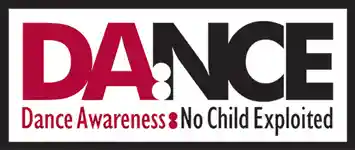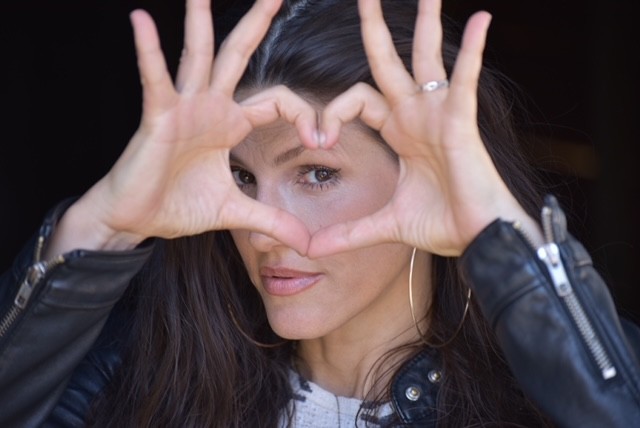Introduction
In our hyperconnected world, where information is just a click away, people have become increasingly desensitized to an issue that permeates modern society. With the advent of the internet and the proliferation of smartphones, we are constantly bombarded with an overwhelming amount of information from various sources. Over the past decade, a noticeable cultural transformation has unfolded. This has affected many facets of society and the realm of children’s dance is no exception. There has been a major shift from wholesome and educational experiences to a concerning trend of hypersexualization. This shift is evident in the adoption of adult costumes, sexually suggestive choreography, and music with inappropriate sexual themes or lyrics. As a counselor, I have witnessed firsthand the challenges individuals face when navigating a hypersexualized society. This disconcerting evolution, has made it necessary to shed light on the issue and understand its implications. This article delves into just a few if the alarming issues that are a part of this rise in the hypersexualization of children’s dance and advocating for a collective effort to address and rectify this unsettling phenomenon.
In contemporary culture, sexualized images, messages, and behaviours permeate various aspects of even regular daily life, from the advertising of products and services to the entertainment we expose ourselves to, to social media and the growing sense that we have to “keep up with the Joneses”. This hypersexualization has led to a general desensitization of society. People have become indifferent or numb to the sexual content because it saturates their surroundings. Simply put, people think it is normal when it is not and they begin to tolerate more extreme examples. As Alexander Pope once wrote
“Vice is a monster of so frightful mean
As to be hated needs but to be seen;
Yet seen too oft, familiar with her face,
We first endure, then pity, then embrace.”
What is the issue: Understanding Hypersexualization
Hypersexualization refers to the overemphasis on sexuality and sexual appeal. It is characterized by the objectification and commodification of the human body, particularly women’s bodies, though not exclusively. This pervasive phenomenon influences people’s perceptions of themselves, their relationships, and society at large. Hypersexualization tends to create within the individual the idea or perception that all that the world contains are objects to be used for one’s own self-interest.
What I believe is worse is that we are pushing this onto people at younger and younger ages, and by people, I do mean children. Children are really unique in that they do not fully comprehend the sexualization aspect of the things they participate in. Still, the adults around them do and fully understand the meaning of certain poses, dresses, and even “cute” looks. All of these are understood to be sexual. This creates a very terrible vulnerability for children.
Unwillingness to Confront the Reality
Many individuals exhibit an unwillingness or blindness when it comes to addressing the reality of hypersexualization. There are several reasons contributing to this. The three I think about the most are:
First, societal normalization of hypersexualization creates a sense of complacency. When sexualized images and messages are constantly present in advertising, music videos, and popular culture, individuals may begin to view these representations as normal, leading to a desensitized response. Over time, they become less likely to question or challenge the prevailing sexualized norms. This is evidenced in people saying, “That’s how it’s always been”, which is not entirely true. It is also manifest when we use the excuse “it’s not hurting anyone” or “both parties are consenting.” It would be like being offered strychnine and then thinking that as long as we are consenting or the action is voluntary on our part, taking the poison will not harm us. There are real neuronal changes that happen when viewing sexualized content. Hypersexualized content changes neurons at a greatly increased or “hyper” rate.
Second, there is a fear of judgement and social repercussions. We are social creatures and so we are uniquely affected by social pressures. Addressing hypersexualization requires acknowledging its impact on personal beliefs, behaviours, and relationships. Doing so has the paired belief and perception that we are being judgemental of others, which is not a good thing in a social environment. Being social creatures we have to agree to get along, otherwise, the group fractures into smaller and smaller pieces making it easier to be attacked by a predator (or other groups). Having the willingness to work together as a big group is extremely useful however, this too can be a problem and used, like a herd of bison headed for a cliff, to our own destruction. Individuals may fear being perceived as prudish, judgmental, or out of touch with societal norms if they voice concerns or critique the hypersexualized culture. This fear can and does hinder open and honest discussions about the topic.
And Third, individuals may be unaware of the potential negative consequences of hypersexualization. Many people fail to recognize the correlation between the objectification of the body, unrealistic beauty standards, and the impact on self-esteem, body image, and mental health. To a degree, this is understandable as the sheer volume of information available can be overwhelming. The internet offers an almost infinite array of resources, opinions, and perspectives, making it challenging to discern what is accurate, reliable, or relevant. Consequently, many people retreat into their comfort zones, seeking out information that aligns with their existing beliefs and values, thereby reinforcing their preconceived notions. This lack of awareness, however, perpetuates a cycle of unconscious acceptance. Individuals are prevented from actively confronting the reality of hypersexualization and instead, they pin it back on the victims in a type of victim blaming. It also sets up a double standard, the objectification of the female form is often seen as taboo yet the firefighter calendars and Mr. Universe competitions are no less objectifying. We need to be willing to say if it’s not good for one, it’s not good for the other. Otherwise by default, if we accept the one form of objectification we have to accept the other form as well.
Consequences of Desensitization
The unwillingness or blindness to confront hypersexualization as it manifests in our society has far-reaching consequences for individuals and society. Victimizing people, children, women or anyone in a vulnerable position is made easier if the victim cannot or does not recognize the signs of predation. Like a tiger in the jungle grass, the longer the prey animal ignores or does not recognize the danger the more likely it will be attacked. It’s not that every person will be harmed, however, the more people desensitized also means there will be a greater number of people harmed when danger does come.
Another thing I have come to realize is the unwillingness to confront the reality of anything, but in this case hypersexualization, actually stifles creativity and innovation. The human brain thrives on interconnectedness. The more talents, expressions, ideas and perspectives there are the more healthy our mental function is. It can foster breakthroughs and new discoveries, new creative works and beauty of indescribable quality. However, when individuals retreat into their comfort zones, which often happens when we are desensitized, they limit their exposure to diverse viewpoints. This can impede intellectual growth and inhibit a kind of cross-pollination, if you will, of ideas.
Supporting Individuals as a Counselor
As a counselor, I have had to help people identify for themselves their blind spots and I have helped individuals explore their experiences and concerns regarding hypersexualization. Some key elements I try and focus on to help individuals confront and navigate this reality.
Education and Awareness: By providing accurate information and raising awareness, individuals can make informed decisions about their engagement with hypersexualized media and culture.
Encouraging Critical Thinking: This empowers individuals to question societal norms and challenge the objectification and sexualization of the human body. This involves analyzing media messages, identifying underlying motives, and considering the consequences of participating in or perpetuating hypersexualized culture. This means the individual will have a self-correcting tool to keep themselves up to date in the changing landscape of society.
Exploring Personal Values: It is essential to help individuals identify and clarify their personal values regarding sexuality and relationships. This process involves understanding the impact of hypersexualization on their beliefs, attitudes, and behaviours, and making changes to their lives if necessary. By aligning personal values with intentional choices, individuals can navigate the hypersexualized landscape with greater authenticity and integrity.
The last I will mention is; Building Healthy Boundaries: This pairs up with the previous but it also takes it to the next level. Establishing and maintaining healthy boundaries in relationships and interactions, including setting limits on exposure to hypersexualized media, establishing clear communication in intimate relationships, and practicing self-care strategies. Self-care strategies that promote emotional and psychological well-being builds a protective wall around the individual and allows them to catch a break or have a safe place where they don’t have to always be on guard. If it is outside the wall the individual doesn’t have to think about it any more.
In conclusion
From my experience as a counselor, addressing the desensitization to hypersexualization requires creating a supportive environment that encourages self-reflection, critical thinking, and personal growth. Understanding the factors contributing to individuals’ unwillingness or blindness helps to guide individuals in confronting the hypersexualization present in society. If we do the work of reflection we can make empowered choices that align with our values and foster healthier relationships with ourselves and others. Through this process, individuals can regain agency or the ability to choose rather than just react, increase their resilience, and have a renewed sense of self apart from and without relying on the hypersexualized content current society is steeped in. If each person takes responsibility for their own individual contribution to hypersexualization in society or at the very least their desensitized blind spot and then does something different, this seemingly small act will have a domino effect on society as a whole. We must safeguard the sanctity of children’s dance education; the only way to do this is a collective effort and responsibility. By fostering a community dedicated to the well-being and development of our youth, we can collectively put an end to the exploitation stemming from inappropriate practices and ensure that children’s dance continues to thrive in an environment that prioritizes their innocence, growth, and artistic expression.
 Bio: Matthew Nalder is an accomplished professional in the field of psychology, equipped with a holistic approach to the discipline and a distinguished academic background. Holding a Master’s degree in Counseling Psychology, he has dual undergraduate degrees—one in Psychology and the other in Addiction and Mental Health—underscoring his commitment to a comprehensive understanding of the human psyche. With a primary focus on the well-being of children, adolescents, families, and couples, Matthew has accrued over a decade of invaluable experience, primarily devoted to working directly with children and youth. Matthew is registered with the Canadian Counselling and Psychotherapy Association (CCPA) as a Canadian Certified Counsellor (CCC). Beyond his professional endeavors, Matthew is a devoted father, tending to the needs and well-being of his own children, who span in age from 12 to 2 years old. His enduring marriage of over 13 years not only attests to his commitment to the values he espouses but also serves as a real-world testing ground for the techniques and knowledge he advocates for, offering a unique perspective and motivation in his professional journey.
Bio: Matthew Nalder is an accomplished professional in the field of psychology, equipped with a holistic approach to the discipline and a distinguished academic background. Holding a Master’s degree in Counseling Psychology, he has dual undergraduate degrees—one in Psychology and the other in Addiction and Mental Health—underscoring his commitment to a comprehensive understanding of the human psyche. With a primary focus on the well-being of children, adolescents, families, and couples, Matthew has accrued over a decade of invaluable experience, primarily devoted to working directly with children and youth. Matthew is registered with the Canadian Counselling and Psychotherapy Association (CCPA) as a Canadian Certified Counsellor (CCC). Beyond his professional endeavors, Matthew is a devoted father, tending to the needs and well-being of his own children, who span in age from 12 to 2 years old. His enduring marriage of over 13 years not only attests to his commitment to the values he espouses but also serves as a real-world testing ground for the techniques and knowledge he advocates for, offering a unique perspective and motivation in his professional journey.



